Fujifilm GFX 100S II vs GFX 100 II
Read our Fujifilm GFX 100S II vs GFX 100 II comparison to find out which new Fujifilm medium format camera is best for you
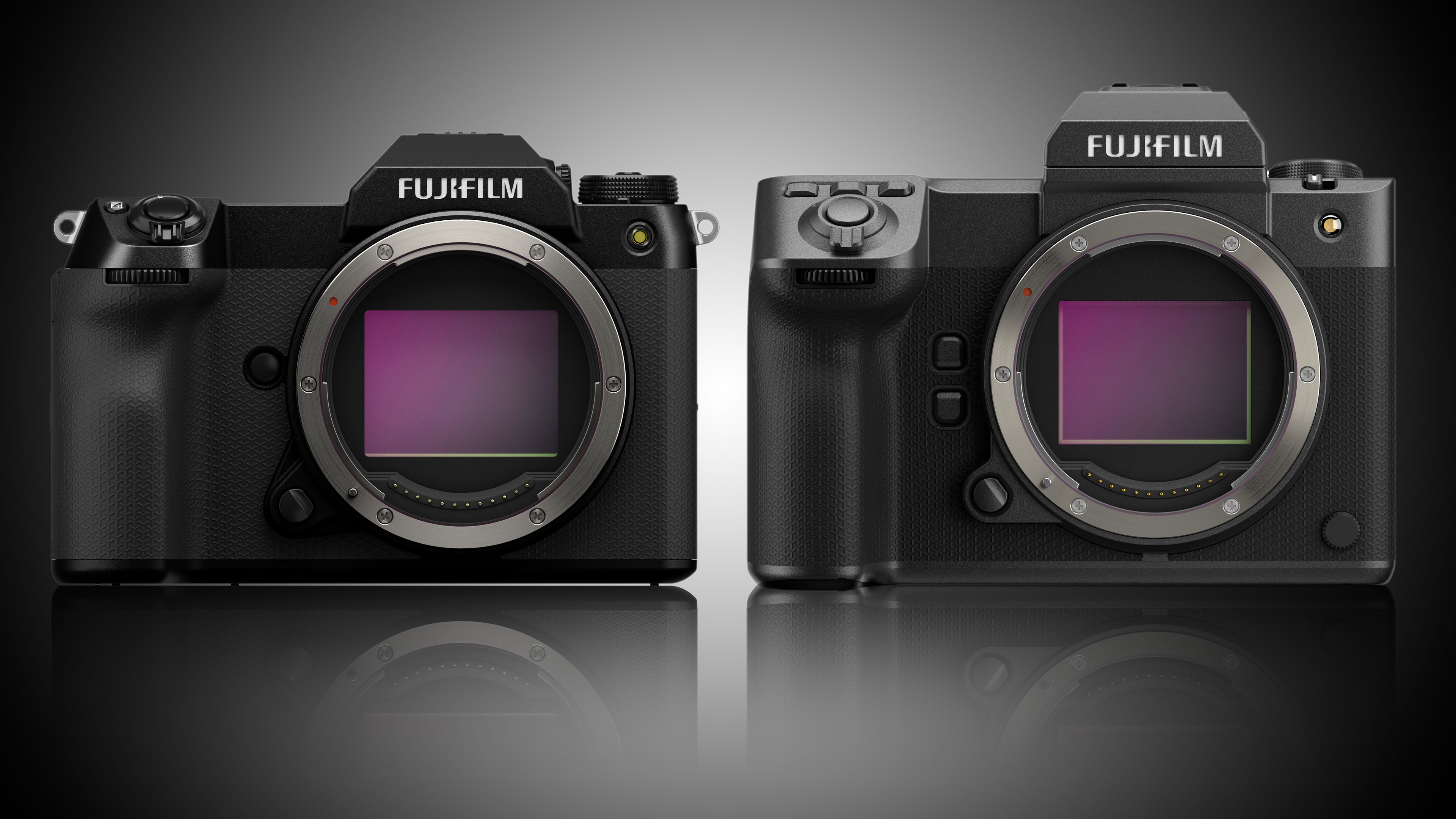
Fujifilm first entered the medium format camera market with the GFX 50S and GFX 50R. The GFX 50S II came along later with a whole bunch of improvements. But all three cameras had 50MP sensors and relatively limited contrast AF.
For a while, these were among the best medium format cameras you could buy, and the best Fujifilm cameras by far for image quality.
But then the GFX 100 came along, with double the resolution, in-body image stabilization, much more responsive hybrid phase/contrast AF and decent 4K video capture. The GFX 100 brought Fujifilm’s medium format up to modern mirrorless full frame camera levels of versatility and power. Fujifilm followed this up with a smaller, lighter GFX 100S version.
If we fast-forward to the present day, the 50MP models have effectively been discontinued, while the 100MP models have both been updated with version II replacements. So now we have the original GFX 100 (still expensive and effectively obsolete) and its replacement, the GFX 100 II, for serious professional users, alongside the cheaper and lighter GFX 100S (still on sale) and its replacement the GFX 100S II.
These GFX models are still among the highest resolution cameras you can buy, making them some of the best cameras for professionals. However, professionals increasingly need high-end video capabilities alongside still imaging, and that's where Fujifilm has made some of its greatest advances.
The GFX range is now effectively just four cameras (three if you forget the original GFX 100) but they still sound confusingly similar.
So we’ve already published a comparison of the Fujifilm GFX 100S II vs GFX 100S, but there’s another interesting choice – should you get the smaller and cheaper GFX 100S II or the larger and more pro-orientated GFX 100 II?
This article runs through the key technical differences to help you decide.
Fujifilm GFX 100S II vs GFX 100 II in 2024
Why you can trust Digital Camera World
1. Sensor
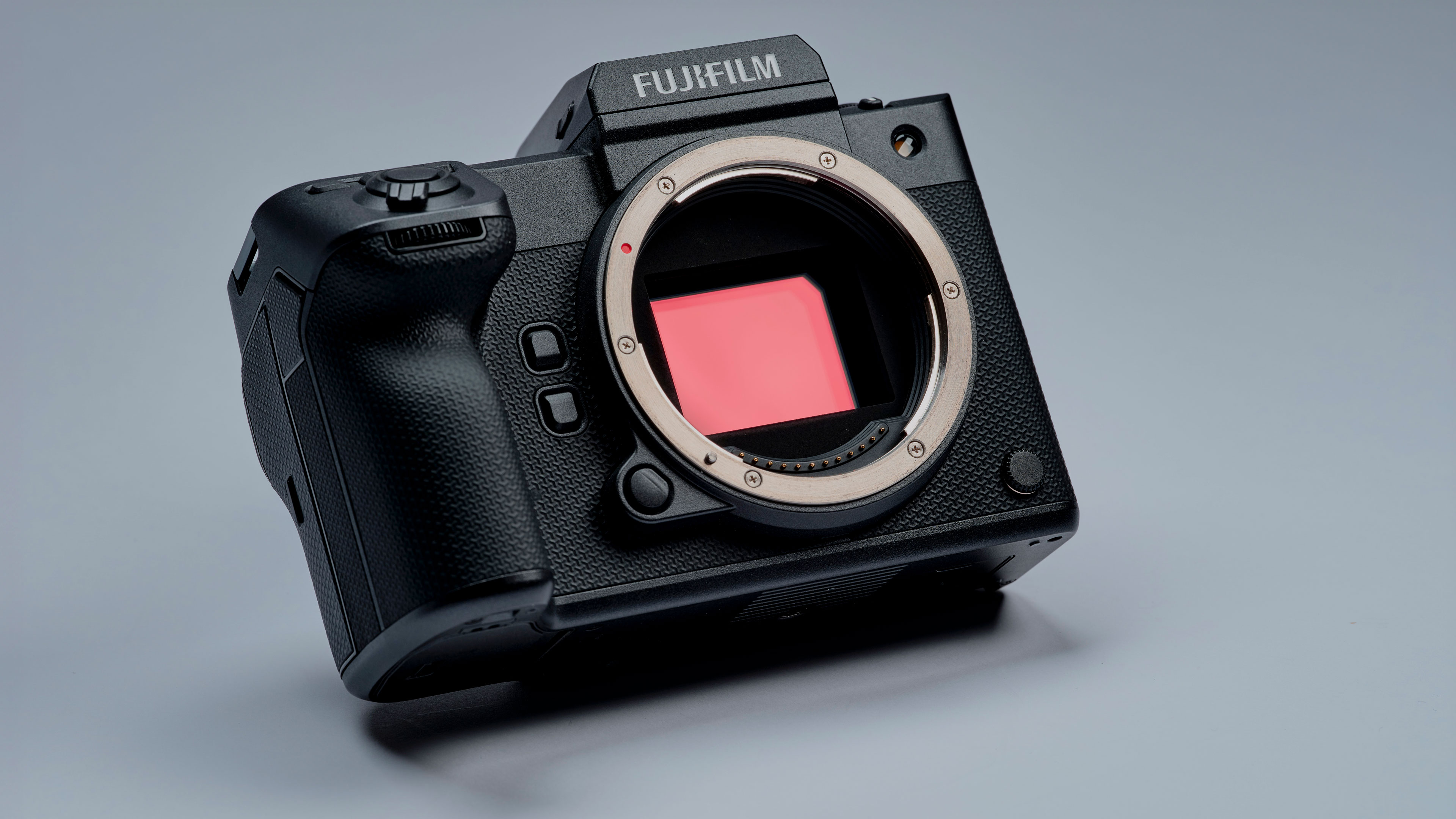
• Fujifilm GFX 100S II: Medium format 43.8mm ×3 2.9mm 102MP CMOS II, X-Processor 5
• Fujifilm GFX 100 II: Medium format 43.8mm × 32.9mm 102MP CMOS II HS, X-Processor 5
These two cameras appear to have the same 43.8mm × 32.9mm 102MP sensor, but there is a difference. The GFX 100 II has a ‘CMOS II HS’ sensor, with the ‘HS’ indicating a high speed readout time which will have an impact on performance, especially for video and rolling shutter effects.
Otherwise, both cameras have Fujifilm’s latest X Processor 5 processor, both have an ISO range of 80-12,800, expandable to ISO 40-102,400, and both offer Fujifilm’s 400MP Pixel Shift Multi-Shot mode.
Compared to the previous generation 102MP sensor, this one has improved microlenses for better results and AF accuracy towards the edges of the frame, and improved photosite saturation capacity, hence the lower ISO 80 sensitivity.
2. Autofocus
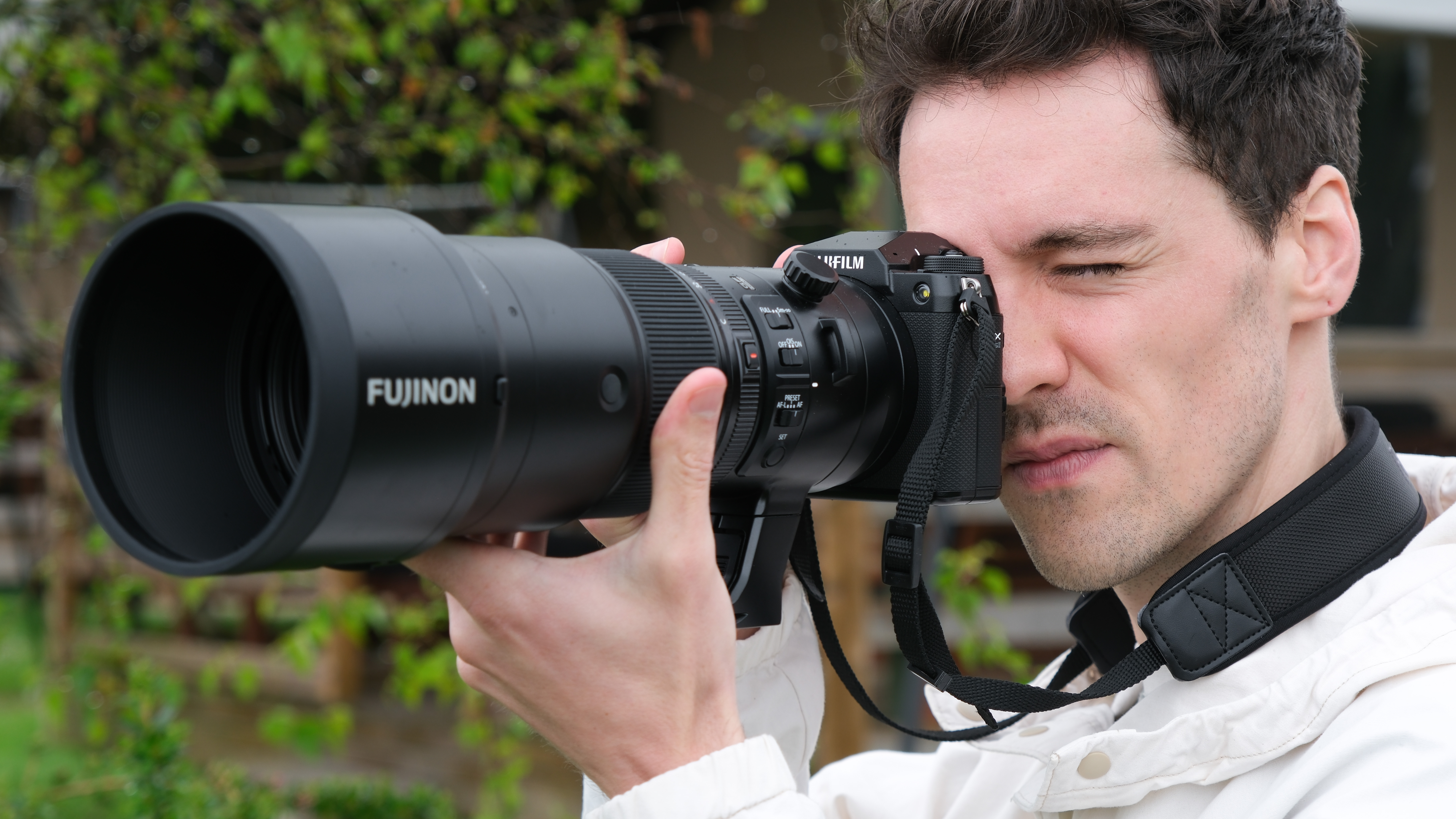
• Fujifilm GFX 100S II: Hybrid 117/425 area phase/contrast AF
• Fujifilm GFX 100 II: Hybrid 117/425 area phase/contrast AF
There are no differences here. Both the GFX 100S II and the GFX 100 II use a hybrid 117/425 area phase/contrast AF, with AI subject detection AF for human faces and eyes, animals, birds, cars, motorcycles, bicycles, airplanes, and trains. The GFX 100 II brought a whole raft of AF algorithm, subject recognition types and subject tracking improvements, and the GFX 100S II benefits from the same updates.
3. Video
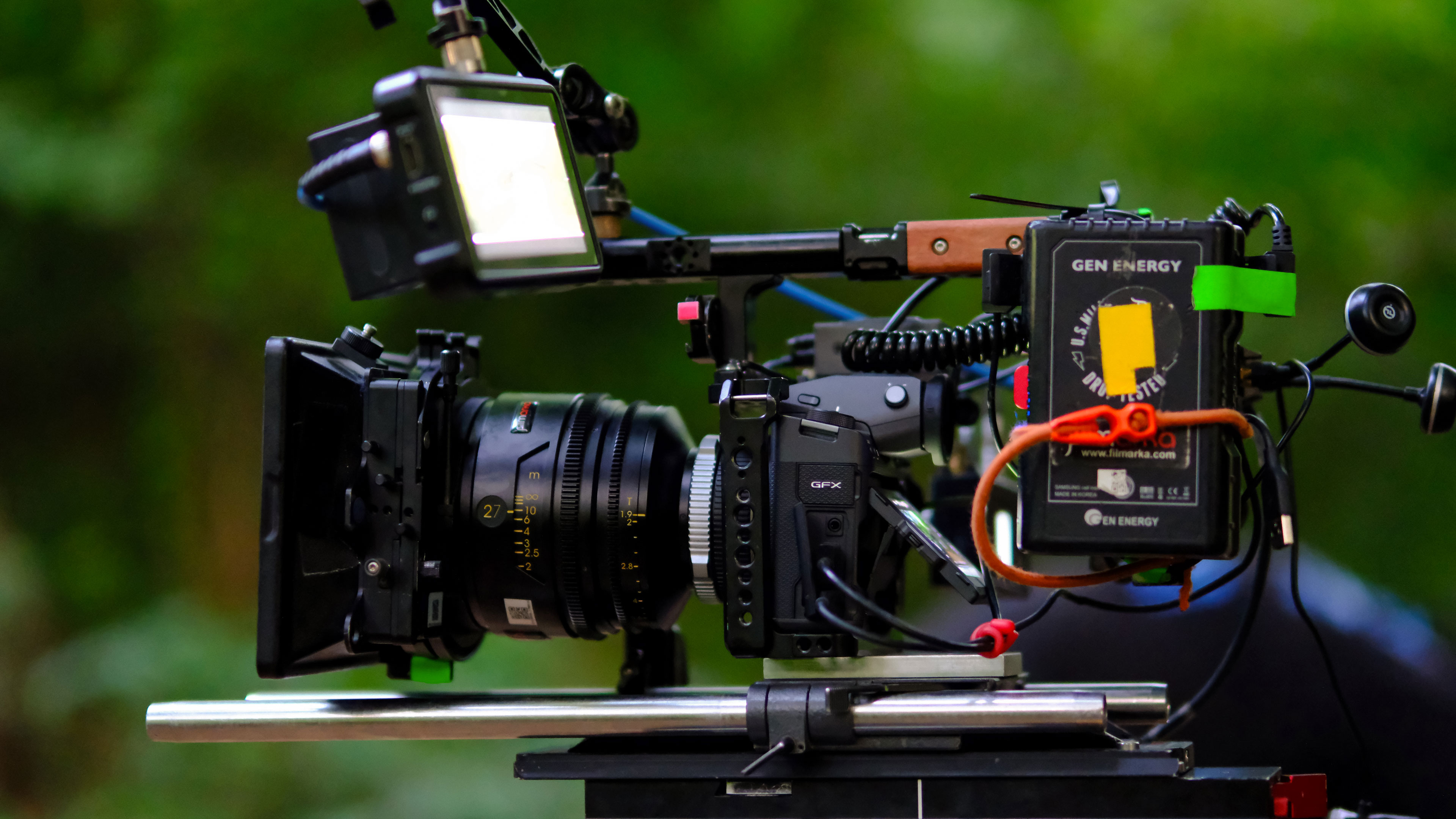
• Fujifilm GFX 100S II: 4K/30p, 10-bit F-Log2, 422 ProRes internal, 12-bit ProRes RAW via HDMI to Ninja V
• Fujifilm GFX 100 II: 4K/60p, 8K/30p, FHD/120p (various crops from 1.0-1.51x depending on format), 422 ProRes internal, 12-bit ProRes RAW via HDMI to Ninja V up to 8K (Ninja V+)
This is where the differences start to kick in. The GFX 100S II is a highly effective video camera that shows the huge strides Fujifilm has made in a very short time. However, the GFX 100 II goes way, way further, offering not just 4K 30/60p capture but 8K 30p video too. Both cameras come with Fujifilm’s latest F-Log2 profile for 14+ stops of dynamic range, direct Frame.io Camera to Cloud compatibility, but the GFX 100 II adds in the ability to record direct to SSD and compatibility with Fujifilm’s optional FAN-001 cooling fan attachment.
The GFX 100S II is a very capable video camera, but the GFX 100 II is more powerful still and better suited to professional/commercial filmmaking.
4. Stabilization
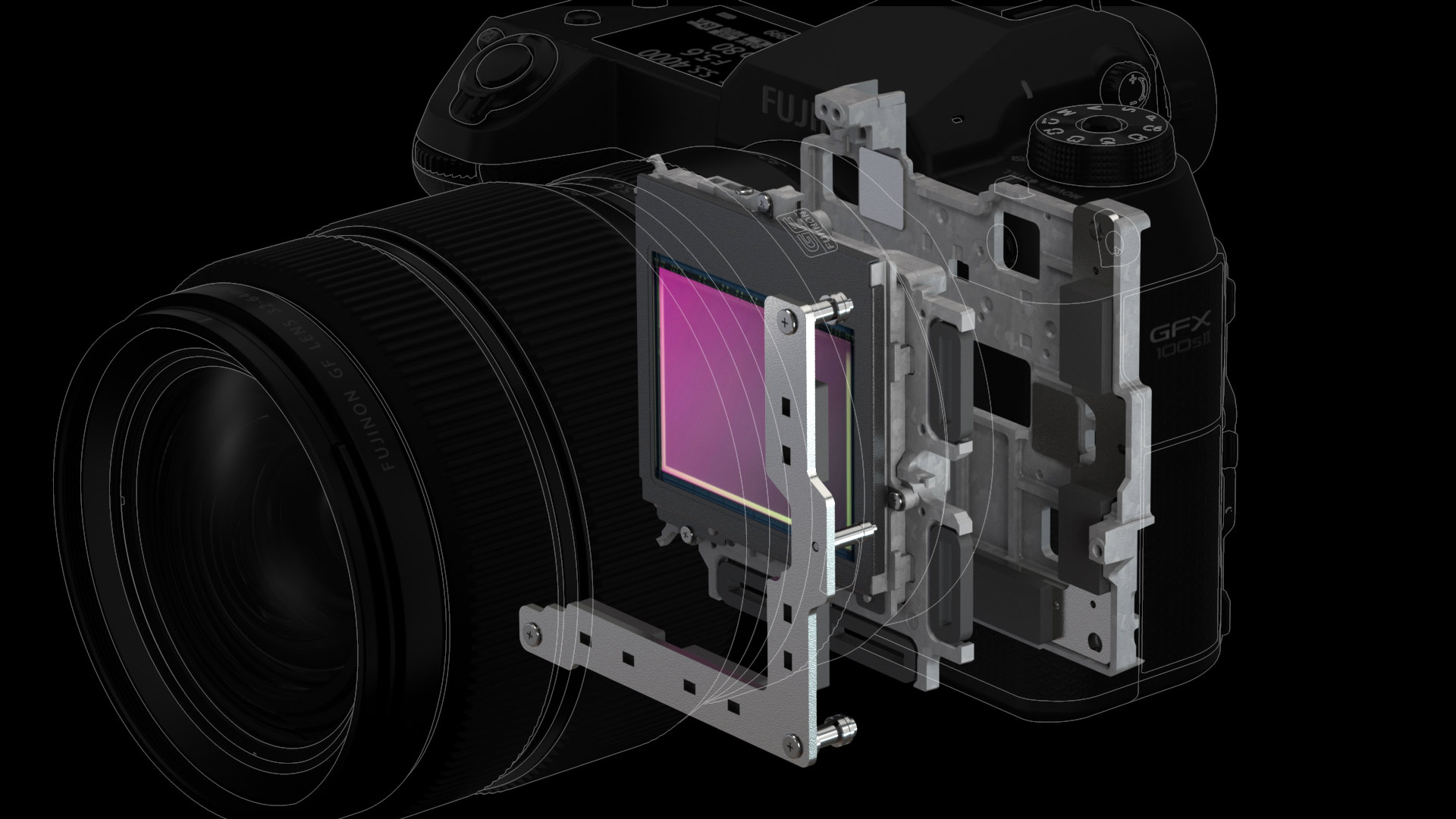
• Fujifilm GFX 100S II: 5-axis IBIS, 8 stops
• Fujifilm GFX 100 II: 5-axis IBIS, 8 stops
With the GFX 100 II, Fujifilm introduced a new IBIS system with a highly impressive 8-stop compensation capability. This now carries through into the new GFX 100S II, so both cameras have he same stabilization and the GFX 100S II is not at any kind of disadvantage.
5. Continuous shooting
• Fujifilm GFX 100S II: 7fps mechanical shutter, 184 JPEG, 30 raw
• Fujifilm GFX 100 II: 8fps mechanical shutter, 1000+ JPEG, 260-1000+ raw depending on mode/compression
Things quickly turn against the GFX 100S II when it comes to continuous shooting. There’s not much differences in the outright speed, with the GFX 100S II shooting at 7fps with its mechanical shutter while the GFX 100 II is slightly faster at 8fps. The GFX 100 II does, however, have the advantage of a much larger buffer capacity as well as high-speed CFexpress storage, so that its buffer capacity – the number of shots it can capture before it slows down – is many times greater than that of the GFX 100S II. If you shoot a lot of burst sequences, especially in raw, the GFX 100 II is a clear winner.
6. Size and weight

• Fujifilm GFX 100S II: 150 x 104.2 x 87.2mm, 883g
• Fujifilm GFX 100 II: 152.4 x 117.4mm x 98.6mm, 948g
The Fujifilm GFX 100S II is remarkably compact for a medium format camera, but the GFX 100 II is not a whole lot bigger. The original GFX 100 was a bit of a monster, but its replacement is a lot smaller, and half-way towards GFX 100S II size.
On paper you can point to the fairly clear size advantage of the GFX 100S II, but by the time you attach lenses of any size, the difference effectively disappears. Indeed, with larger lenses you may find the GFX 100 II gives a better grip. It also has a larger number of customizable function buttons.
7. Displays
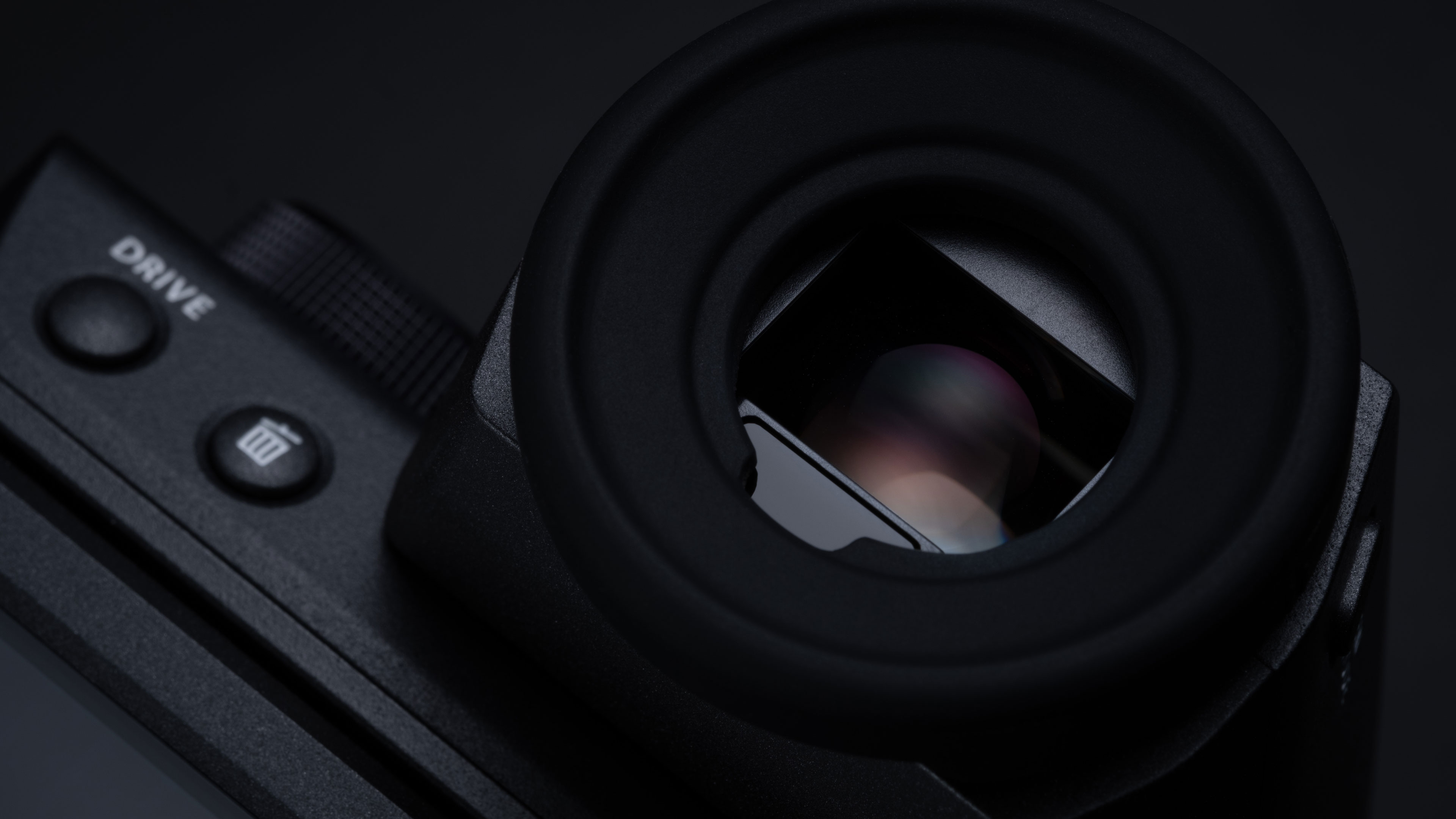
• Fujifilm GFX 100S II: 0.5-in, 5.76m dot EVF, 0.84x magnification, rear 3.2-inch 2.36m dot three-way tilting touchscreen
• Fujifilm GFX 100 II: 0.64-in, 9.44m dot EVF, 1.0x magnification, 3.2-inch 2.36m dot three-way tilting touchscreen
The EVF of the GFX 100S II is not at all bad, and a clear and worthwhile improvement on the EVF from the original GFX 100S. However, the EVF of the GFX 100 II is in a whole other league. The display panel itself is larger at 0.64-in, it has almost twice the resolution at 9.44m dots and a much higher 1.0x magnification too. Other enhancements include a 120fps frame rate boost for fast moving subjects, increased buffer memory for reduced delay and blackout and 5.3fps blackout-free shooting with the electronic shutter.
The GFX 100 II also supports Fujifilm's EVF tilt adapter EVF-TL1, for when a tilting screen isn't enough and you need a tilting/swivelling viewfinder too.
Round the back, the 3.2-inch touchscreens are identical. For many, though, the superior EVF of the GFX 100 II on its own may be enough to tilt the decision towards that camera.
8. Power
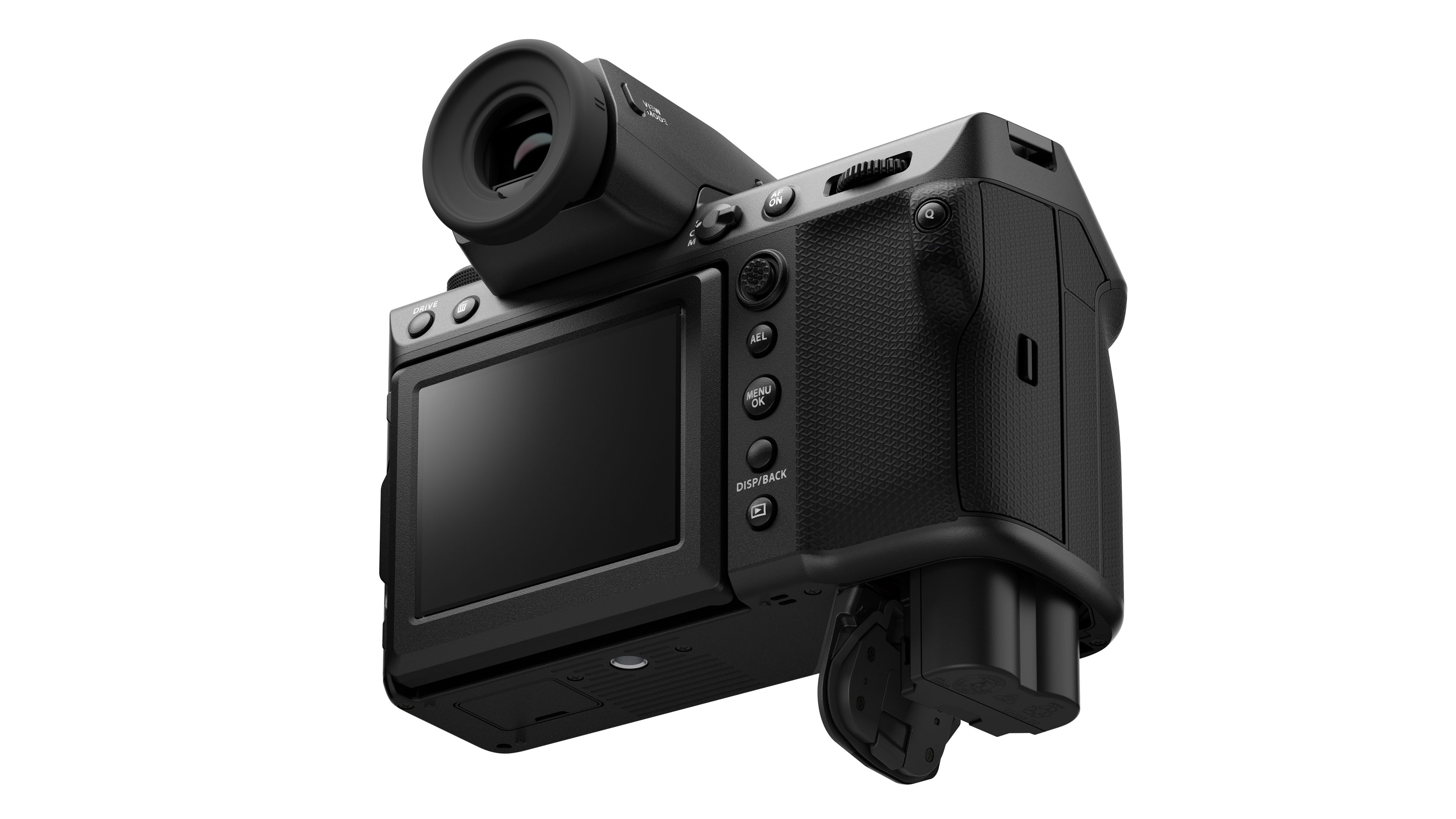
• Fujifilm GFX 100S II: NP-W235, 530 shots
• Fujifilm GFX 100 II: NP-W235, 540 shots
If these cameras have a weak point, it’s the battery. Both use a single NP-W235 lithium in cell, and this offers up to 530 shots on a single charge on the GFX 100S II and 540 shots on the GFX 100 II. Both are somewhat limiting for a professional camera, and it is perhaps a pity that Fujifilm didn’t exploit the larger body of the GFX 100 II to fit a larger battery.
9. Storage
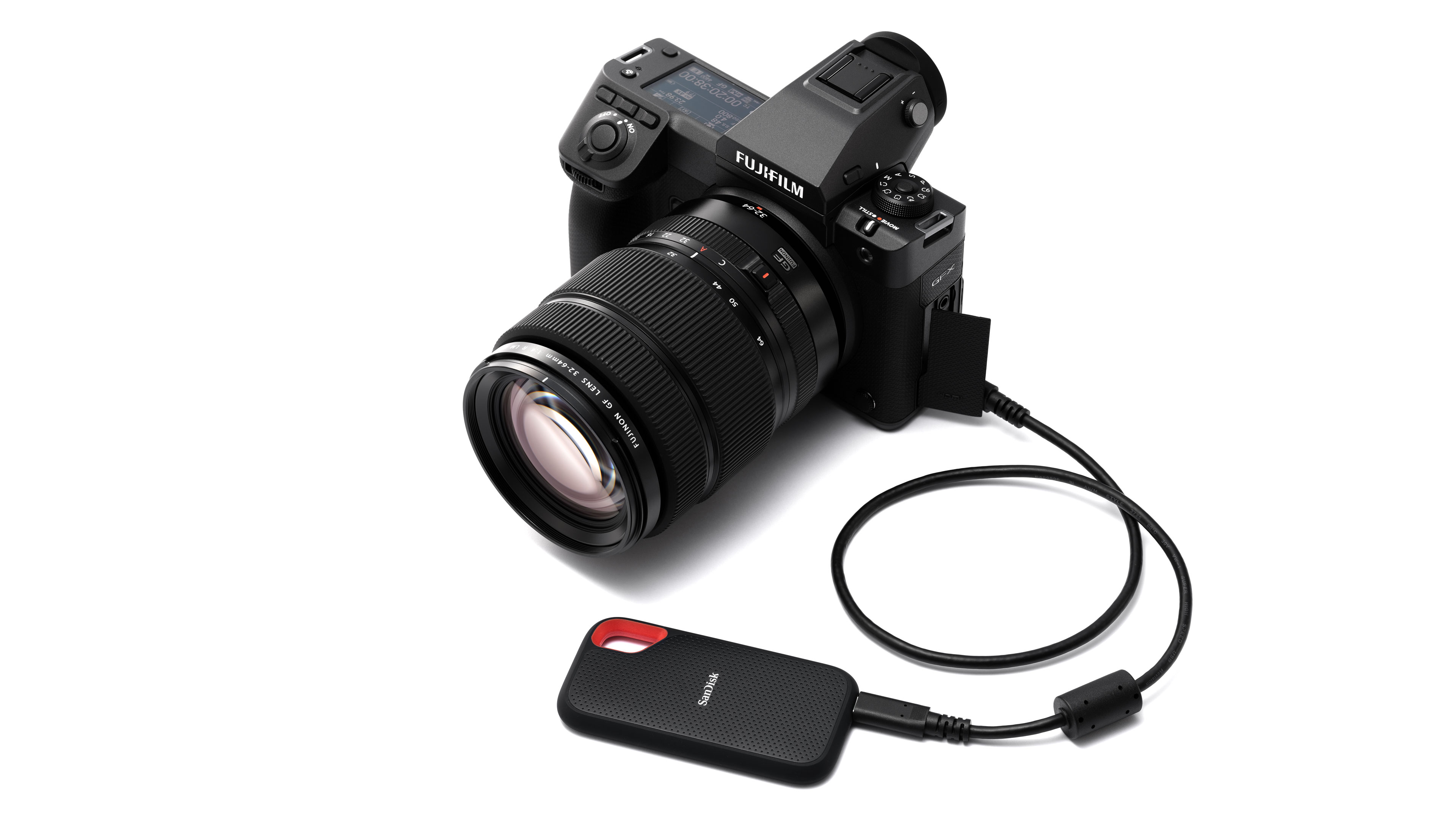
• Fujifilm GFX 100S II: 2x SD UHS II
• Fujifilm GFX 100 II: 1x SD UHS II, 1x CFexpress Type B
The GFX 100S II offers a pair of SD UHS II card slots while the GFX 100 II has one SD UHS II slot and one CFexpress Type B slot. The CFexpress slot makes a lot of sense because it opens up the GFX 100 II’s prodigious video and continuous shooting capabilities. It does mean, though, that you’re working with two card types, and if you intend to use both simultaneously for backup, for example, the camera’s speed will be limited by the slower SD card slot.
The GFX 100S II’s twin SD slots may be slower in principle, but they do make it easy to use matched cards for real time backup, say.
10. Connectivity

• Fujifilm GFX 100S II: USB Type-C, HDMI micro Type D, Remote, Mic, Headphone, Bluetooth, Wi-Fi
• Fujifilm GFX 100 II: USB Type-C, Ethernet, HDMI Type A, mic, headphone, Wi-Fi, Bluetooth
In line with its professional aspirations, the GFX 100 II comes with an Ethernet port for high-speed wired transfers, and it swaps the HDMI Type D connector on the GFX 100S II for a full size HDMI Type A port, which videographers tend to prefer simply for its extra security.
Fujifilm GFX 100S II vs GFX 100 II: conclusions

• Fujifilm GFX 100S II: $4,999 / £4,999
• Fujifilm GFX 100 II: $7,499 / £6,999
If your principal interest is stills photography, the GFX 100S II gives little away to the GFX 100 II – you will get the same high-quality 102MP images from both. However, if you also do a lot of burst shooting or you are involved in higher-end filmmaking projects, the GFX 100 Ii is a clear winner.
It’s true that the GFX 100 II costs up to 50% more to buy than the GFX 100S II, but it’s a more powerful and versatile camera, with features aimed squarely at professional content creators.
It also has a superb EVF, perhaps one of the best we’ve seen. That might not sound a major deciding factor, but if you’re using a camera professionally, day in day out, it makes a big difference.
Perhaps the most significant factor is the pricing. When the GFX 100S first came out, it was little more than half the price of the much bigger GFX 100. With the GFX 100S II and GFX 100 II, though, both the size and the price are much closer. If you’re looking for a camera that offers amazing image quality for the money, the GFX 100S II is hard to resist. But if you’re looking for a versatile, professional workhorse, the GFX 100 II adds an extra level of burst shooting performance and video capabilities without pushing the price through the roof.
Get the Digital Camera World Newsletter
The best camera deals, reviews, product advice, and unmissable photography news, direct to your inbox!

Rod is an independent photography journalist and editor, and a long-standing Digital Camera World contributor, having previously worked as DCW's Group Reviews editor. Before that he has been technique editor on N-Photo, Head of Testing for the photography division and Camera Channel editor on TechRadar, as well as contributing to many other publications. He has been writing about photography technique, photo editing and digital cameras since they first appeared, and before that began his career writing about film photography. He has used and reviewed practically every interchangeable lens camera launched in the past 20 years, from entry-level DSLRs to medium format cameras, together with lenses, tripods, gimbals, light meters, camera bags and more. Rod has his own camera gear blog at fotovolo.com but also writes about photo-editing applications and techniques at lifeafterphotoshop.com
